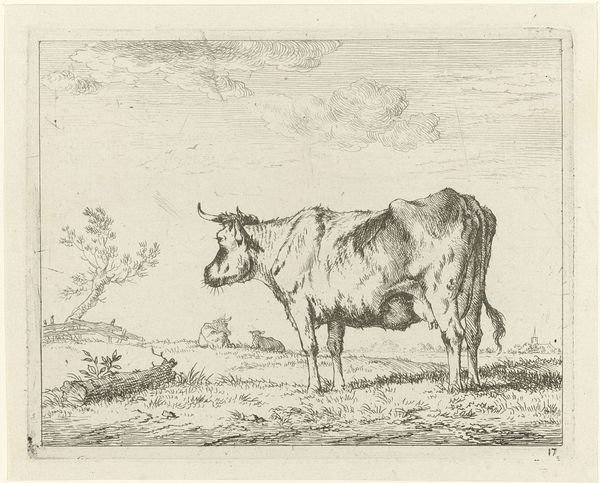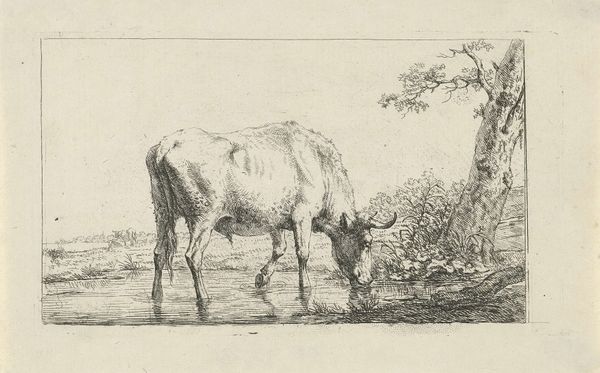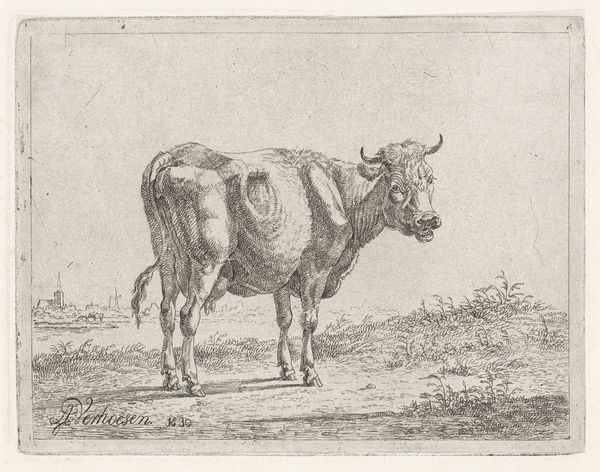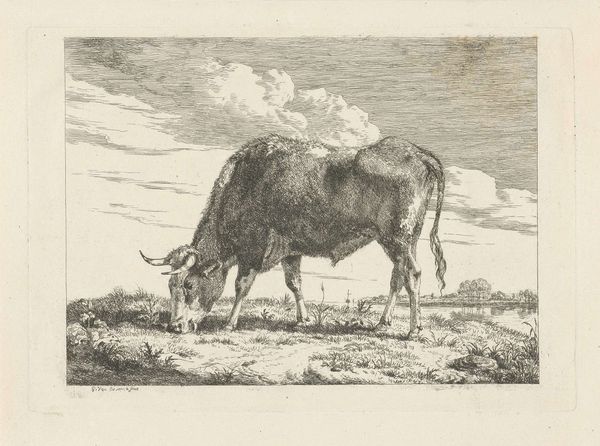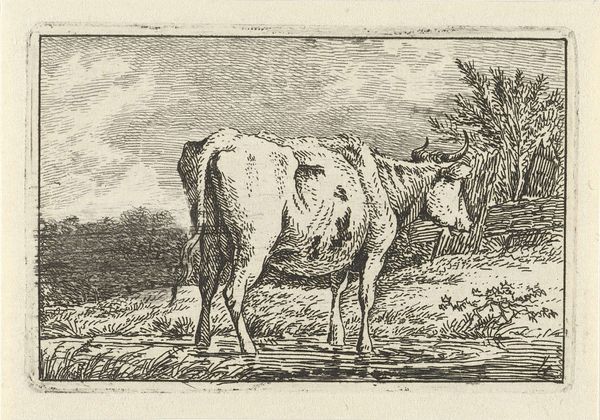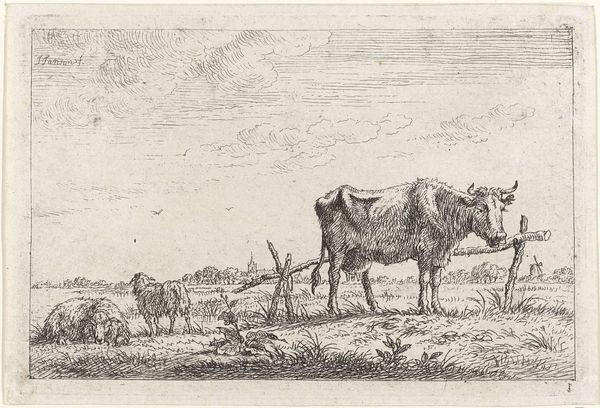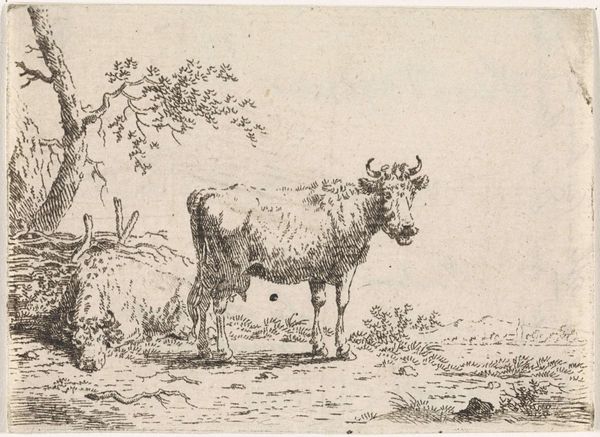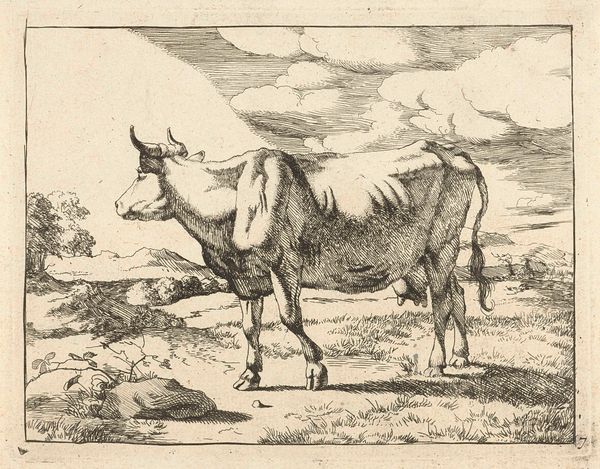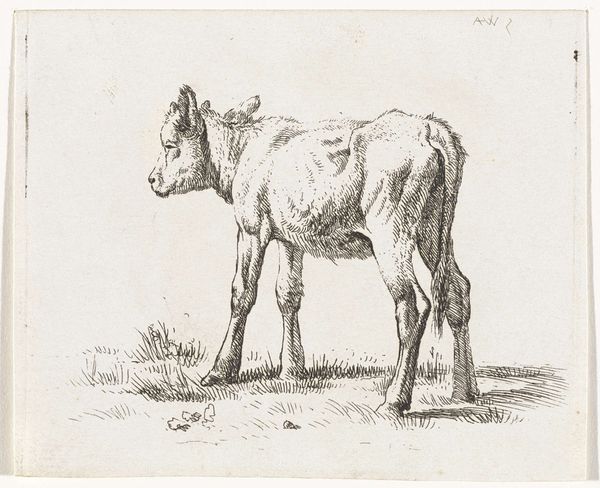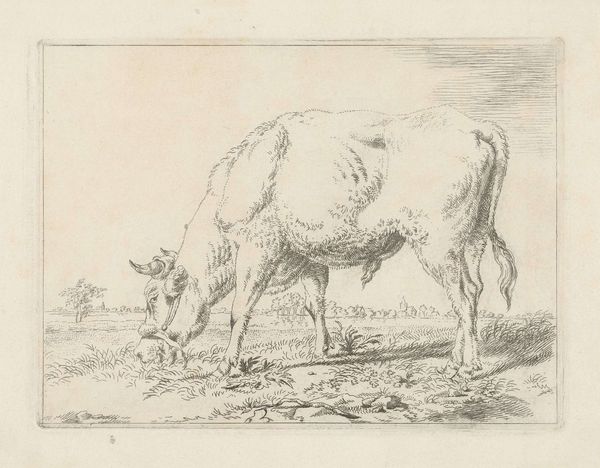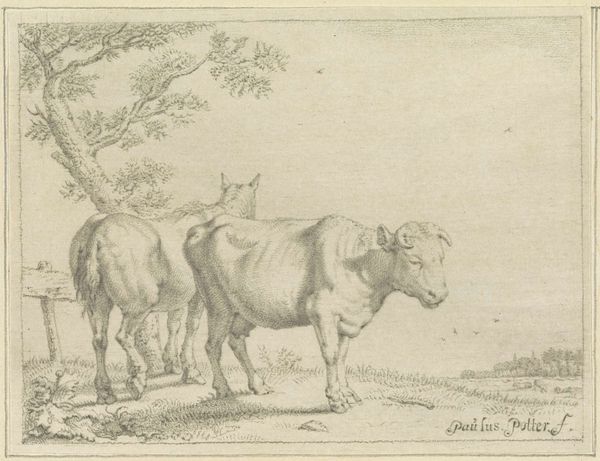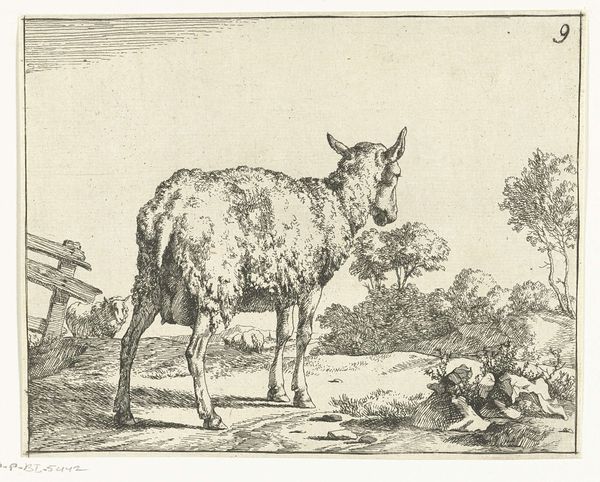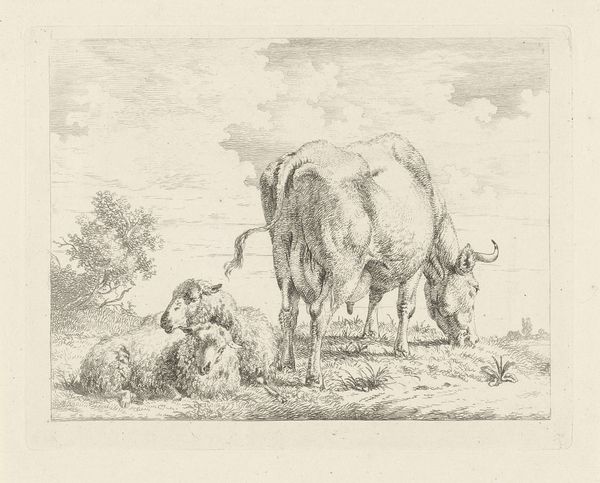
Dimensions: height 104 mm, width 145 mm
Copyright: Rijks Museum: Open Domain
Johannes Janson made this etching, *Koe in weiland*, sometime in the 18th century. The technique of etching involves coating a metal plate with wax, drawing through it with a stylus, and then bathing the plate in acid, which bites away at the exposed lines. It’s essentially an industrialized version of drawing, and was a popular technique in the hand-press era, allowing artists to make multiple copies of an image. Consider the amount of labor that went into this seemingly simple image. Every line you see had to be deliberately inscribed, and the varying depths of the lines suggest a careful control of the etching process. The density of mark-making describes the animal's bulk, and implies the vastness of the pasture she occupies. What’s easily missed is the cow itself. The dairy industry was already well established in 18th-century Holland, and the artist likely knew these animals intimately. By focusing on the material process, we recognize the cow not just as a symbol of pastoral life, but also as a literal product of labor.
Comments
No comments
Be the first to comment and join the conversation on the ultimate creative platform.
